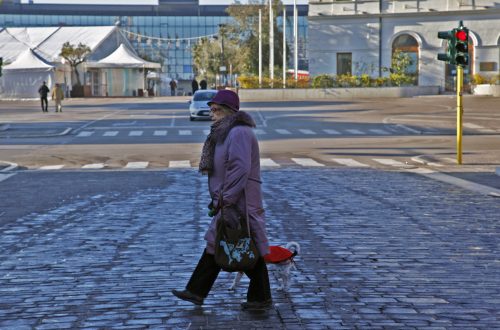
On Tips’n Tricks to ‘take you photos to the next level’
I recently asked a friend, who works on the editorial side of the music industry, to share his thoughts on one of my photographs taken during a flamenco concert. His response was a deep and thorough analysis, which I will spare the readers in full. In brief, however, he praised the lighting as particularly effective for flamenco photography, noting how the chiaroscuro effect recalls the classical paintings of Caravaggio. Regarding the composition, he observed that the bailaora’s body fills the frame dynamically, without ever feeling cramped. In his conclusion, he remarked that the image captures the very soul of flamenco. As flattering as this commentary was, I must admit that none of these considerations were consciously present at the moment of capture. Immersed in the flow of the music and the dance, I simply reacted instinctively when something “clicked” and I took the shot—just once, without resorting to burst mode. Initially published on 35mmc.com.
This somewhat lengthy preamble serves to introduce the core topic of this article: the proliferation of ‘tips and tricks’ videos across content-sharing platforms, purporting to teach better composition, camera handling, lighting management, and so forth, with the subtle irony of claiming to be a ‘professional xx photographer’ (replace ‘xx’ with ‘sports’, ‘street’, ‘landscape’, etc.) while, instead, earning money by running a YouTube channel or social networking profile to ‘teach’ others how to take a photograph.
To be concise, my opinion—and I stress, it is my personal opinion—is that such material often works as a self-promotion (and monetisation) tool for those who make it. By contrast, it proves of limited use, and can even be detrimental to the development of a personal photographic style. This is why, as a rule of thumb, I label as ‘non interested’ every video where somebody tries to ‘sell’ a camera or pretend to ‘teach’ something while actually posing as the ‘smartguy’ in videos where he shoots random photos pretending to be an ‘expert’.
Readers who have had the patience to follow my previous posts on 35mmc will know that I firmly believe a good photograph is born not merely from technical proficiency, but above all from an educated mind—one that has absorbed, over countless hours, the aesthetic principles embodied by painters, sculptors, and architects. In other words, a photograph emerges from the synergistic interaction between the muscle memory needed to operate the camera effortlessly and the cultural depth that allows one to recognise “the moment”.
Certainly, rules must be learned before they can be broken. Guidance is necessary to avoid basic mistakes. However, the true innovation in photography rarely springs from the mechanical application of rules. Spending time seeking lines and composing frames without a cultivated sense of aesthetics may yield technically competent but emotionally sterile images.
Finally, I want to make it clear that my point has nothing to do with ‘perfection’ or ‘perfectionism’ as a goal in photography. I don’t really care about these ‘ultimate’ goals that can, allegedly, be achieved by following these online tips, because my focus is solely on personal improvement. What matters is not whether a photo wins an award in a competition or gets a bunch of likes on a social network. What matters is that it is better than the one I took yesterday and worse than the one I will take tomorrow.
Of course, the business side of this argument is quite different, but that is a topic for another post.




